For the past 30 years Rankin has been a prominent figure in the culture of fashion, not only capturing it in his photography, but also in promoting it through his publications, including Dazed & Confused and Hunger. To celebrate three decades in the business, he is releasing a new tome, Unfashionable: 30 Years of Fashion Photography, tracking the evolution of his career. Below, the artist opens up about the early years, working with Kate Moss, and why he doesn’t necessarily consider himself a “fashion” photographer.
What made you want to do a retrospective? Usually those come at the end of someone’s career, but you’re still going…
I’ve been looking at my fashion work for ages as a body of work for archiving, and it was quite extensive. I’d never done a very affordable, smaller, biographic book, I’d always done the bigger, more showing off type of books. We spoke to Rizzoli and they said that they would be really interested in it, and I think it really just came from their enthusiasm to do something that we got excited about it, because it’s something that I don’t always feel particularly comfortable talking about. I don’t really see myself inherently as a fashion photographer. I always tried to do things that were more comedic or analytical.
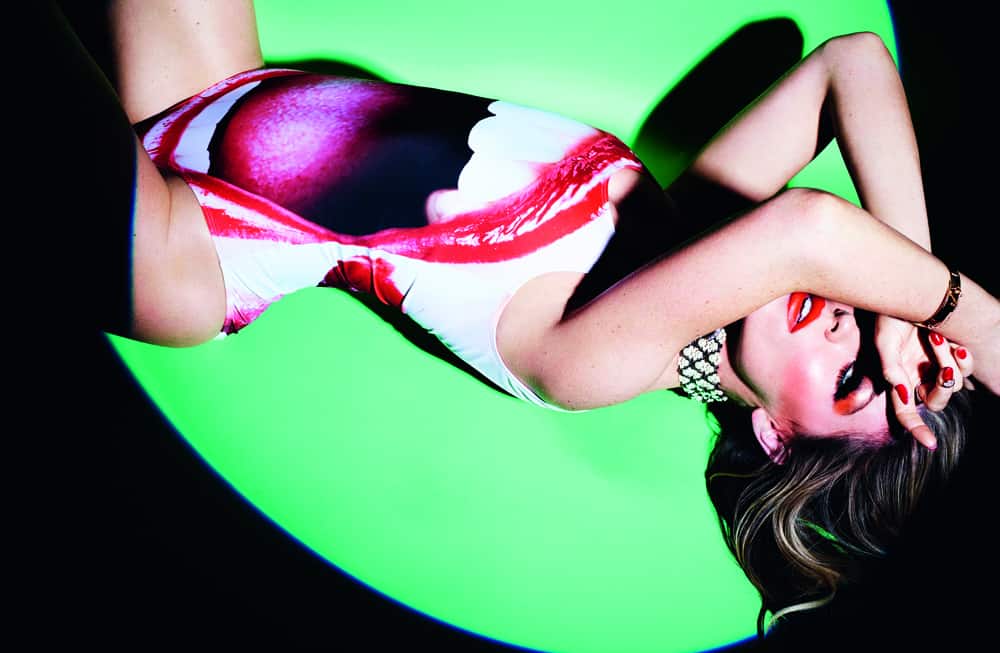
“Eye Eye Abbey Clancy,” Hunger, Issue 12, 2017 (Rankin)
Tell us more.
I guess it is a hangover from my college days, because I studied photography as art. I studied a lot of conceptual photographers and I was always very drawn to their work, but at the same time I was very interested in reaching a wider audience back then. I didn’t want to just reach an audience of 10,000 people — I wanted to hopefully reach millions of people.
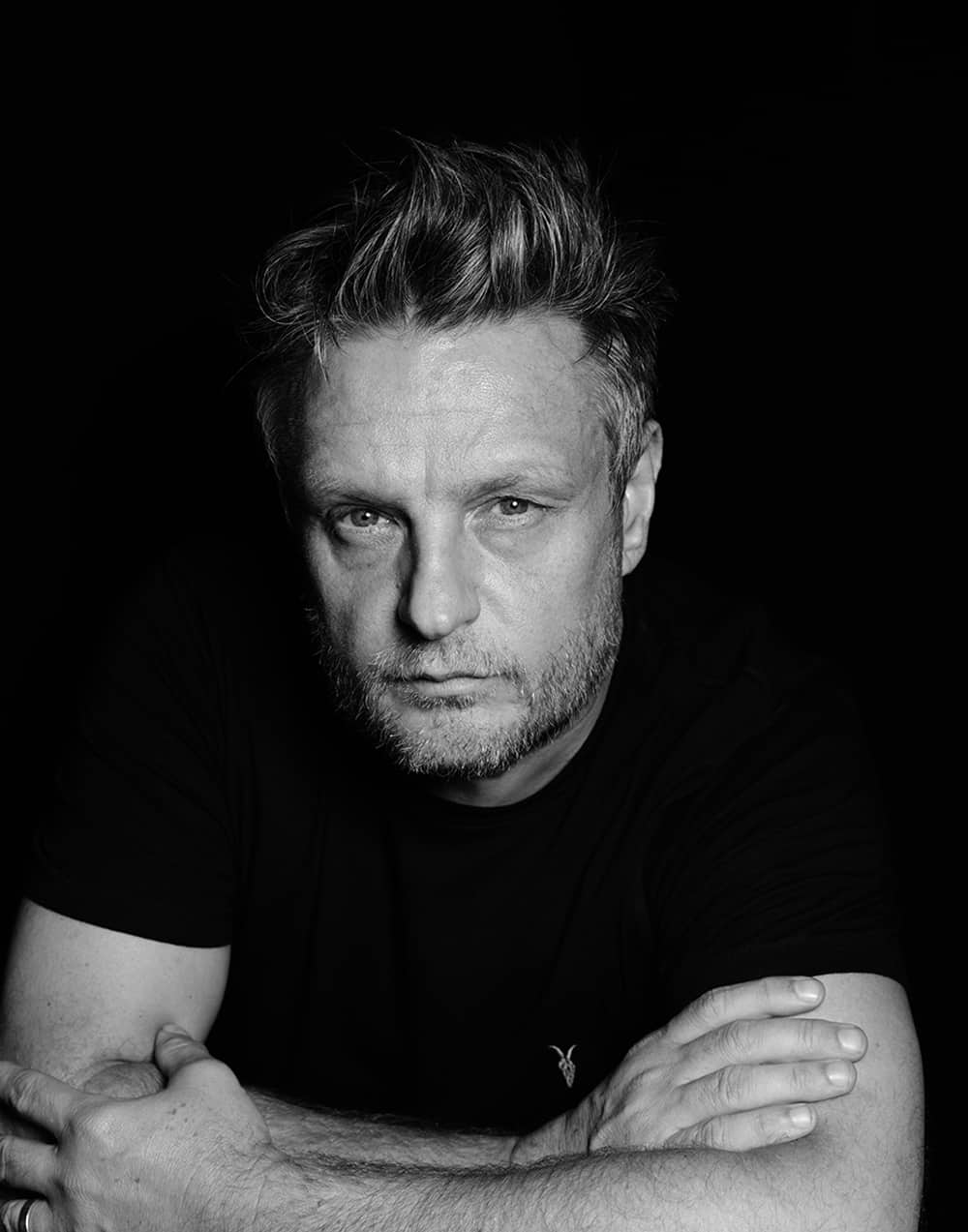
Rankin (Courtesy)
You mentioned that you were studying art photography — how did that background weave its way into your fashion work?
I was solely influenced by a whole bunch of art photographers. Duane Michals was a big influence and when I was starting out. What was really interesting was that we started Dazed at exactly the same time as Frieze. We were within a year of each other, and we were all studying the same things, which were semiotics, and Roland Barthes, and stuff like that. I loved all of that stuff but I wasn’t from an art background, so I guess I never had the guts to just be a straight artist. I kind of felt that it was a very limited audience. What was weird is that we started Dazed and then these guys were becoming successful at the same time as we were starting to do stuff, and we were really coming from this similar perspective, which was to create something that was intellectually stimulating, but hopefully also created a dark physical reaction when you look at it. I thought it would be interesting to the medium of fashion to take some of those ideas and those approaches and make them about what we were talking about which was identity, beauty, how models are treated…I was really fascinated by other sort of photographic mediums [too]. I really loved documentary work, and I was very interested by death pictures, so I came up with an idea to do fashion pictures that were about death.
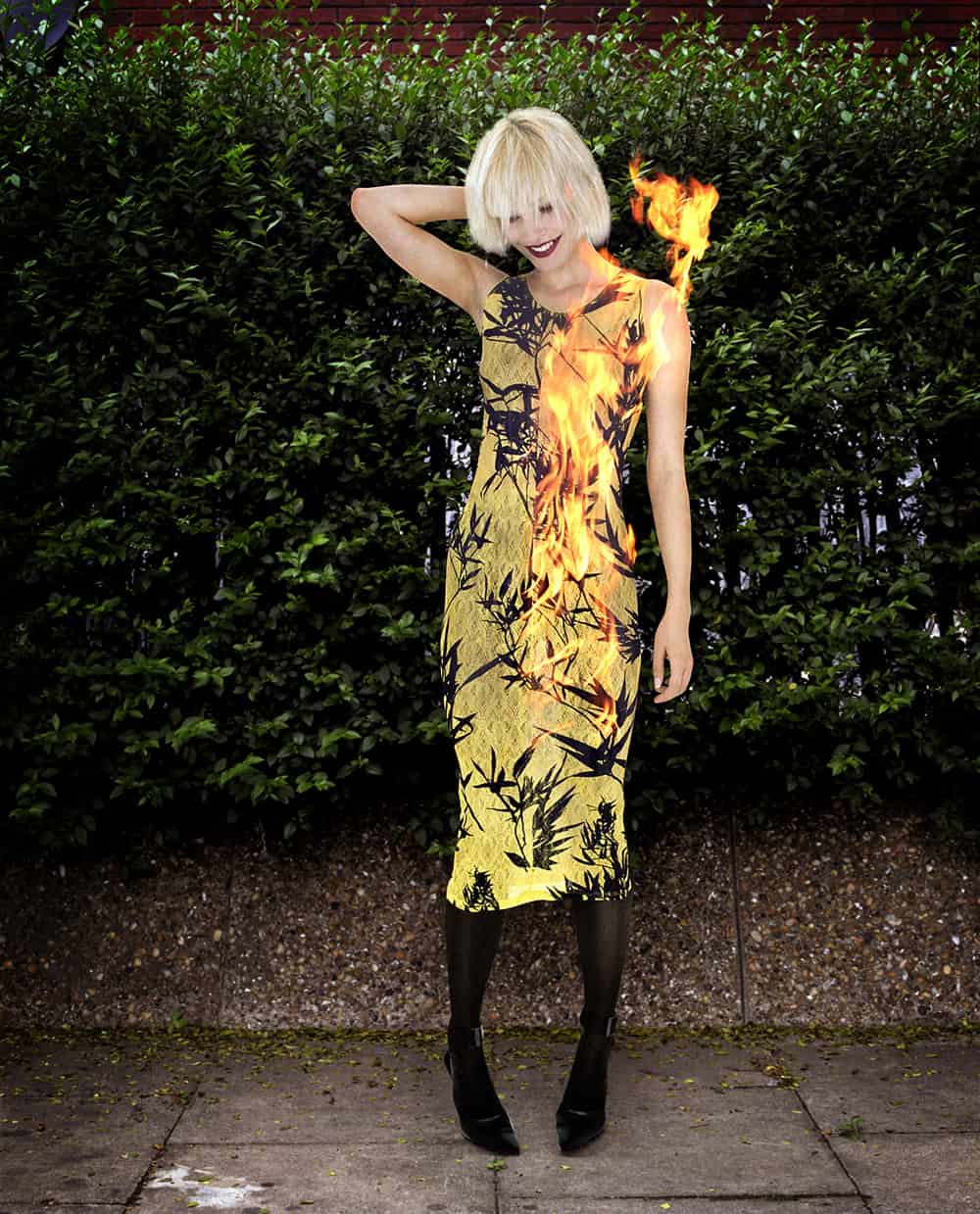
“Highly Flammable,” Dazed & Confused, Isssue 21, 1997 (Rankin)
When you were just starting out in the world of fashion, who were some of the people that you met?
It was so small when we first started. Katie [Grand] and I were really obsessed by people like Peter Lindbergh, David Sims, and Glen Luchford, and Nick Knight to some extent as well. They were about three or four years ahead of us, and we could see that they had created a whole new visual aesthetic that was really influencing the fashion world, which was a kind of grunge — very influenced by music, a more paired down approach. But I really love people like [art photographer] Sally Mann. I was really interested in the way that she photographed her children. I was like, “Wouldn’t it be interesting to put a child on the cover? And wouldn’t it be interesting to put somebody crying on the cover? And wouldn’t it be interesting to photograph a model that’s not a normal sized model? And wouldn’t it be interesting to have different ethnicities in the shoots?” Now they’re all normal, but back then everything was a big deal.

“Me Me Me,” 1988 (Rankin)
I think people saw us as art starts and [thought] Who do they think they are? Also we were so, I especially, technically naive… But we kind of knew how to put a magazine together. We were very lucky to be around for Apple Mac launching Page Maker and things like that, where we learned how to do things very quickly. We were kids as well! In ‘90 I was 24 or 25, and Katie was 21, and Jeff when I first met him was 18. And we’d not worked in the industry. We didn’t assist, and we didn’t know anybody. Like, maybe someone knew someone through someone who worked at i-D or worked at The Face. We saw those magazines as amazing, but like clubs that you couldn’t join. We didn’t think we could join that gang, we felt we weren’t cool enough, and none of us came from London — we all came from places that had no connection to anybody in the industry. We were quite a merry bunch of little rascals really… I don’t think people appreciated it. I was also very arrogant. I would be like, “Yeah I’m here to change the face of this industry,” and didn’t really know what the industry was. It was great, till probably ’97. We were really on a mission, and we all got on. We were like a band. There’s three of us, and then my assistant who’s a guy called Phil Poynter who was the fourth member. To make money we did nightclubs. That was our way of making cash. We didn’t make money from the magazine. We kind of met all the people that we put in the magazine in nightclubs.
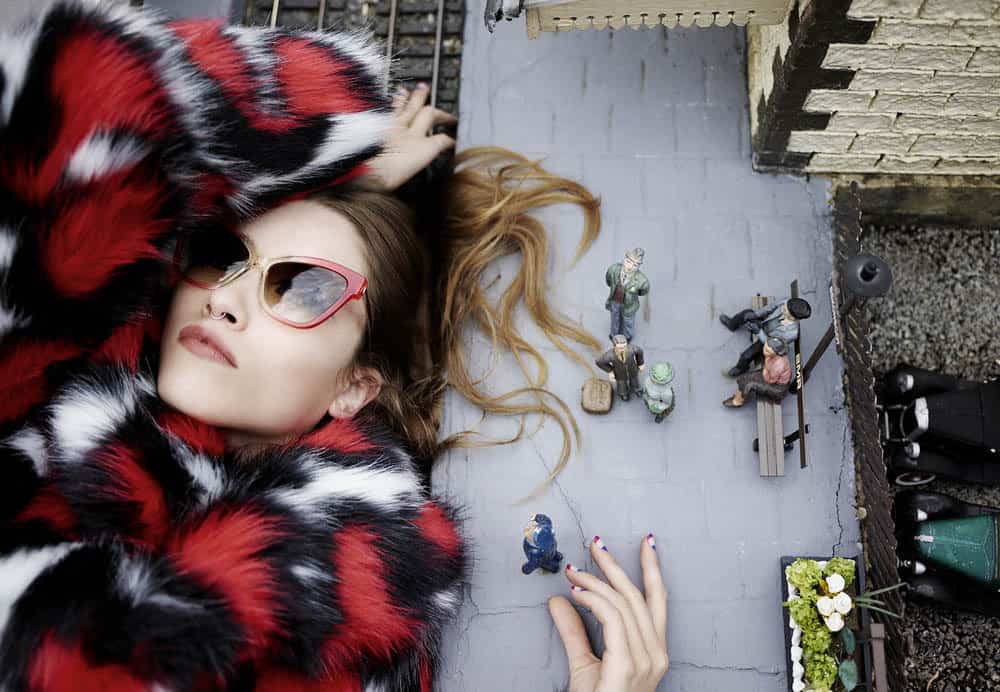
“It’s A Small World,” Hunger, Issue 11, 2016 (Rankin)
How did you make money in nightclubs?
In London, you would be a promoter. So you would put a night on at a venue (we called one “Blowup”), and we would get half the door from doing that club, and that would be our way of making cash. To promote our nightclubs we’d used to go to other clubs. We met everyone at all the early ‘90s nightclubs. I met Katie [Grand] in a bar! I remember I met Craig McDean through somebody. He came to one of our nights and I was like I can’t believe I met Craig McDean in the club that we do, because he was such a big, successful photographer. We learned in public — we grew up in public, in a way. Which is interesting to do, but you make a lot of mistakes when you do that. It’s a bit like a bunch of 20-year-olds in a band and embarrassing themselves 20 years later. The thing is that that feeling of not wanting to be part of it never really left me whereas I think with Katie and Jefferson, and then further Katy [England] and Alasdair [McLellan] — definitely the two Katie’s, Katy England and Katie Grand. They were like fashion experts.
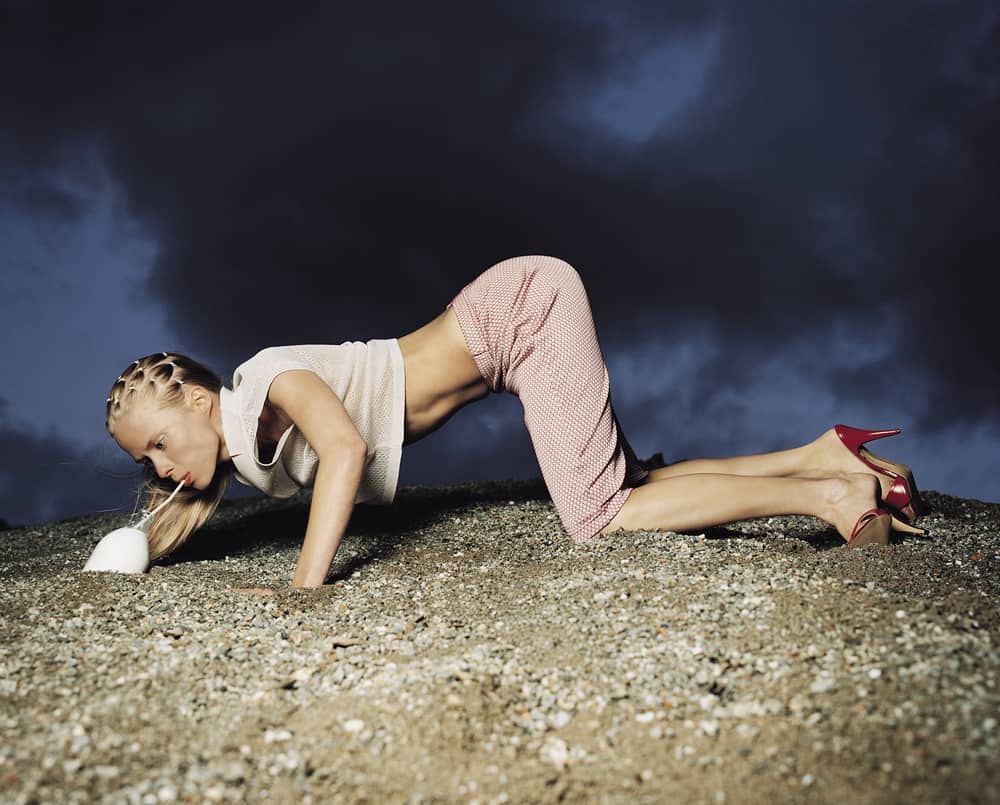
“Stranded,” Diesel Style Lab, 1999 (Rankin)
In your conversation in the book with Kate Moss, she referred to the 90s as the “swinging 90s” — what was that decade like in the fashion industry and in the publishing industry?
It was really nihilistic, it was really good fun. When we came to London we didn’t know you could go to a party and have a free drink! When you’re 24, 25 and you go to a couple parties and you’re like, The drinks are free? That’s basically what the industry was like for that decade. Then you had music that came along at the same time. I started doing shoots for Pulp in I think ’94, and met them when Jarvis [Cocker] was at [Central] Saint Martins. We became friendly with them. Then the whole industry intermingled. I think that’s what Kate means — we all went through the ‘90s going to a lot of parties because we were all in our 20s. I weirdly dropped out of it in about ‘97 because I had my son in ’96. By mid-‘96 I was out of it, I was kind of a weekend dad so I didn’t party as much.
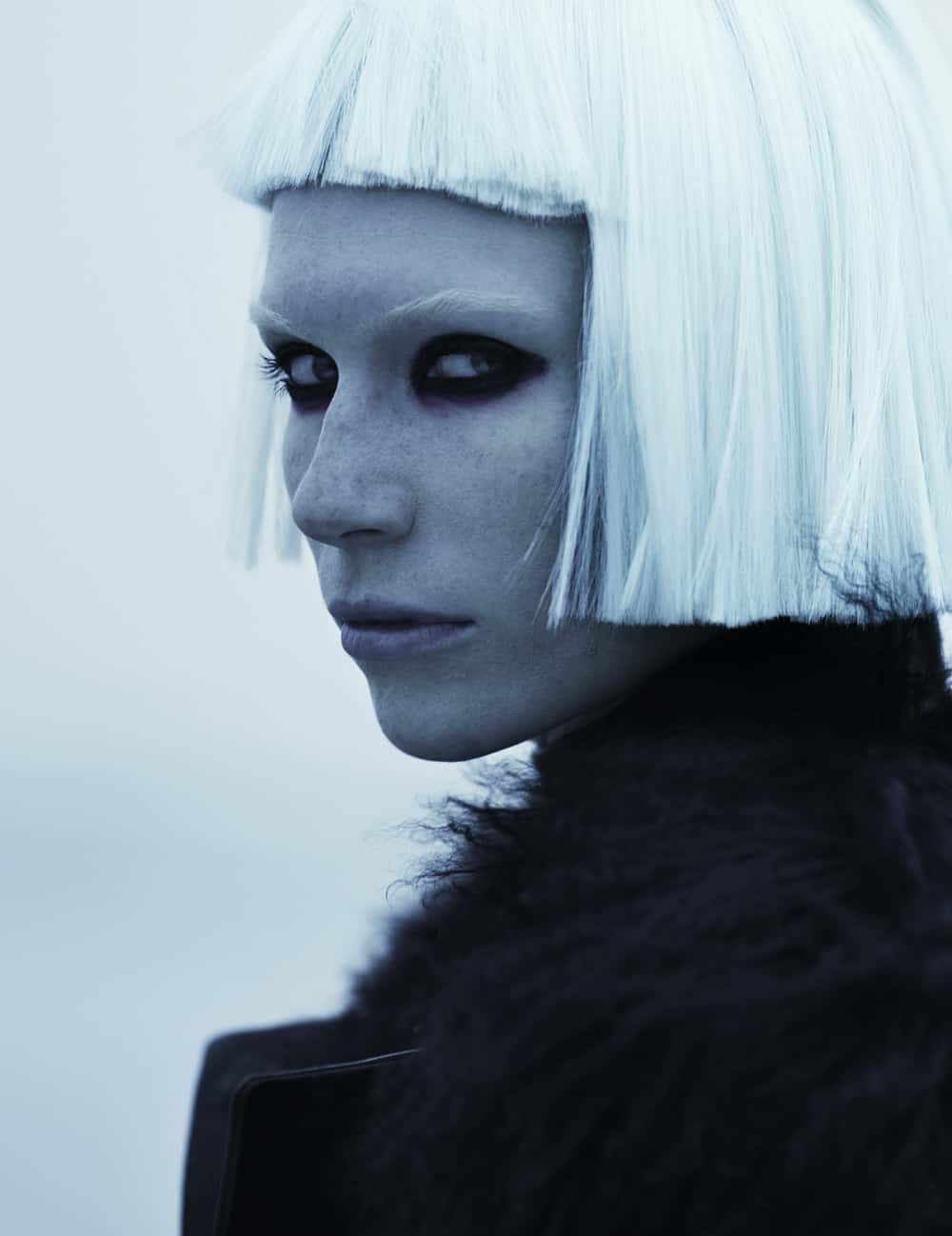
“Into The Mist,” Hunger, Issue 3, 2012 (Rankin)
What was it like shooting Kate Moss as she was on the rise?
She was really famous by the time I shot with her. It was great because Katie Grand had really worked her magic at getting in with the model agencies. By the mid-‘90s, she really had become part of the young up-and-coming styling group. I remember we got Helena Christensen as our first supermodel, and it was such a big deal to get Helena. Then when we shot Kate it was kind of a defining moment because we’d watched her with Corrine Day, and David Sims, and Glen Luchford. We just thought that she was the perfect model for our generation because she was very unique, very unusual, very independent. When you meet she’s such a good laugh! She makes you laugh all the time, and she’s got such a great laugh. Very ironic [sense of humor], takes the mickey out of everyone. She was also not the obvious supermodel. She was our perfect cover person because she was what we wanted. She was brilliant to work with. I always say, all the really big models, everyone just thinks that they’re beautiful and they stand there, but actually they just have this incredible ability to know what angle looks good, and to become a character, but retain something about themselves that’s really unique.
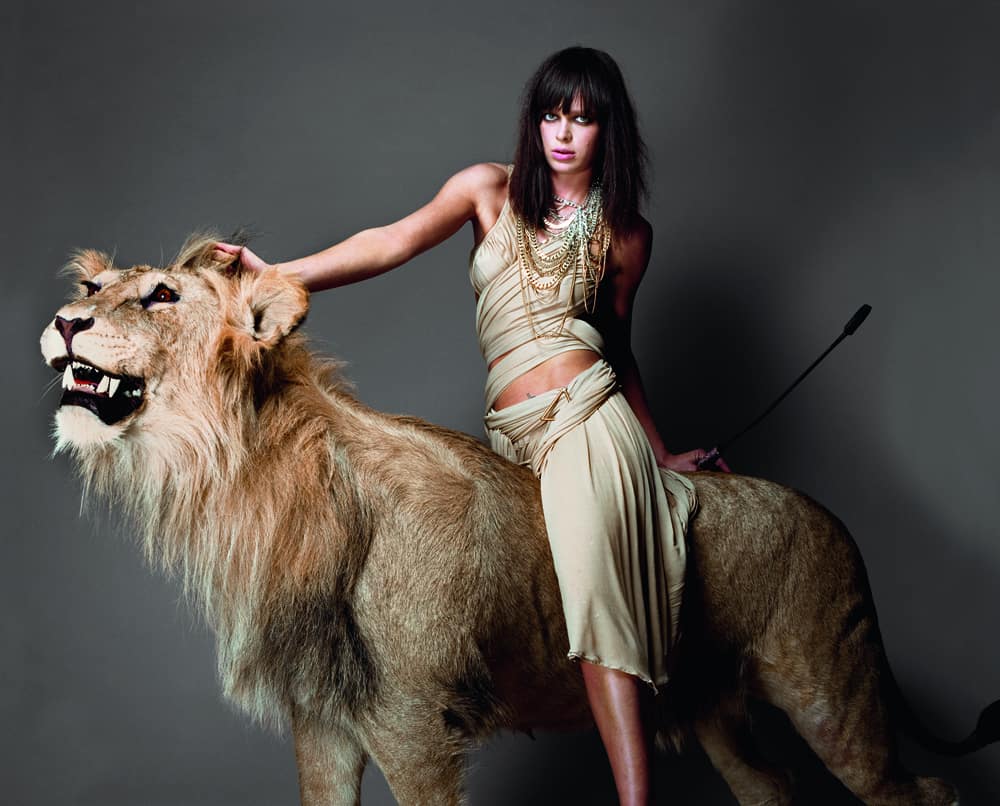
“Animal Magnetism,” Jalouse, Feb 2001 (Rankin)
Are there any models at the moment that you like working with?
Georgie [Hobday], I love working with her. I always love working with Heidi [Klum] because she doesn’t take shit from anyone and she’s just absolutely adorable and so funny, and she makes me laugh all the time. I love working with my wife because she just dominates the camera. I tend to have a set group of people who I work with all the time, and I’m not very good at breaking out of that. When you have a shorthand with models and subjects and they understand you, it’s easier to work.
When you were going through your archives what was it like narrowing down what you were going to include?
So hard! We have this very stringent and model release thing where if we don’t have a model release then we don’t use it. A lot of people we just couldn’t find. We had five shoots where we just couldn’t find the subjects. In fact one of them just popped up the other day and it like, damn, we just missed that person! We also had 3,000 pages of pictures and we had to reduce it down to 100 or whatever it is. When you do a story it’s normally three or four double page spreads so it could be up to 10-12 pictures in it, and I hate the idea of losing pictures because you don’t have enough space. And because this type of book is for a wider market — it’s for kids, it’s for people who have got an interest in fashion. I didn’t want to create a book for the fashion industry. I wanted to do it for people who were interested in the photography of fashion. I didn’t want it to be about the clothes, I wanted it to be about the stories, and the collaborations, and the ideas behind the shoots. That’s why I called it Unfashionable because really it’s about those collaborations not about what they were wearing.
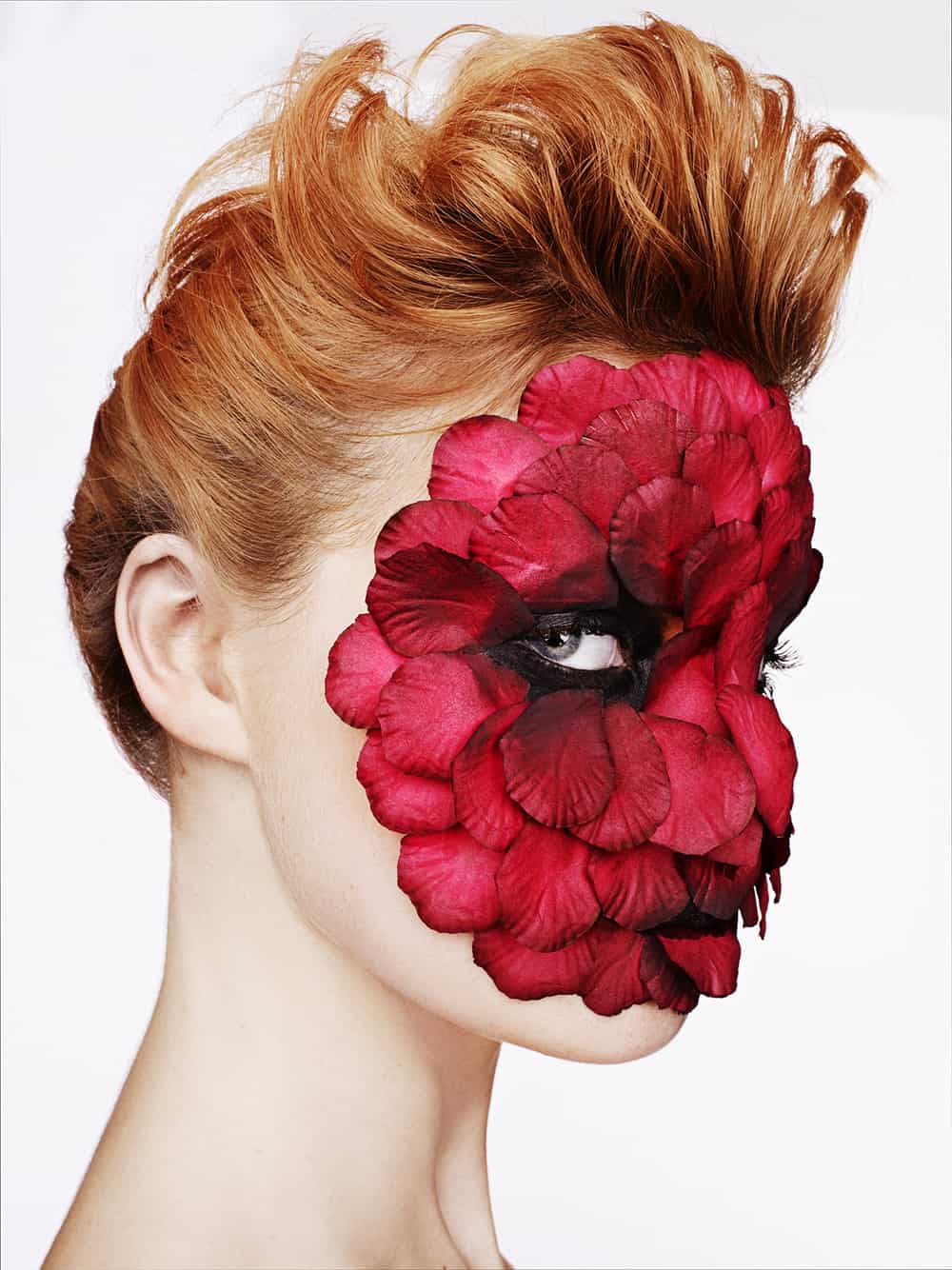
“Less is More Make-Up,” 2015 (Rankin)
When you were going through everything were you able to reflect on how you evolved over the years?
I have and it’s really interesting because I love and am really seduced by fashion photography. I love the Steven Klein’s, the Steven Meisel’s and the Mert and Marcus’. Back then I was really competitive and really thought that I was a fashion photographer. It took me a while to realize that I wasn’t and I was never going to be. It’s quite nice to look back at it because now I can see why they’re so good at it and why I just could never get it in the way that they got it. I feel a bit at peace about it, like I’ve resigned myself to understanding who I am, and why I do what I do as a person. I’ve learned a lot along the way. I look back and I don’t necessarily like who I was back then. I was a bit of a dick, and I was very arrogant. I feel like it’s nice to see that I’ve grown up and I’ve become a better person. It’s good to learn from your mistakes and from your stupidity and all that stuff.

“Nancy Boy,” Another Magazine, Issue 1, 1994 (Rankin)
Nick Irwin described your shoots as becoming “Rankinized”. How would you describe “Rankinized”?
I would never say that! It’s a bit like blowing smoke up at myself. I don’t think of myself like that. I feel like the reason you can sometimes see it’s me is because I’m really trying to give the person this empowerment, or a sense of humor. I’m trying to draw someone out as opposed to manufacture them. I think that may be what he means, but I don’t know if I’m honest!
The current magazine industry is a little shaky right now. Do you think that you could still launch a magazine like Dazed or Hunger today?
I don’t think you should never say never. It’s very unwise to predict things like this because you just never know. The record industry has had an amazing vinyl comeback. It really just takes one or two people to believe in it and get behind it for that to happen. I haven’t got enough money to finance it. The actual system is something I and Jefferson predicted would change 20 years ago. I remember going to so many meetings and telling people, and they were looking at me so blankly. Now those people don’t take meetings because they don’t do magazines anymore. We were always trying to do both, and create social. I think if I were to do predictions I would predict that the big change is going to be in social, because I think it’s incredibly unethical the way that the big tech companies have created these social platforms and even our phones…I think that there will be a massive ethical movement that will really change the way that we’re consuming stuff. This relentless self-absorption is very scary. I remember people were talking about Photoshop in the ‘90s and early 2000s and how bad it was, and now 14-year-old kids do it on their phones. I think that inherently is very dangerous, having that ability and not having the understanding of yourself, and this constant need for self worth and value through these things designed to be addictive. I don’t see that coming to a good end.
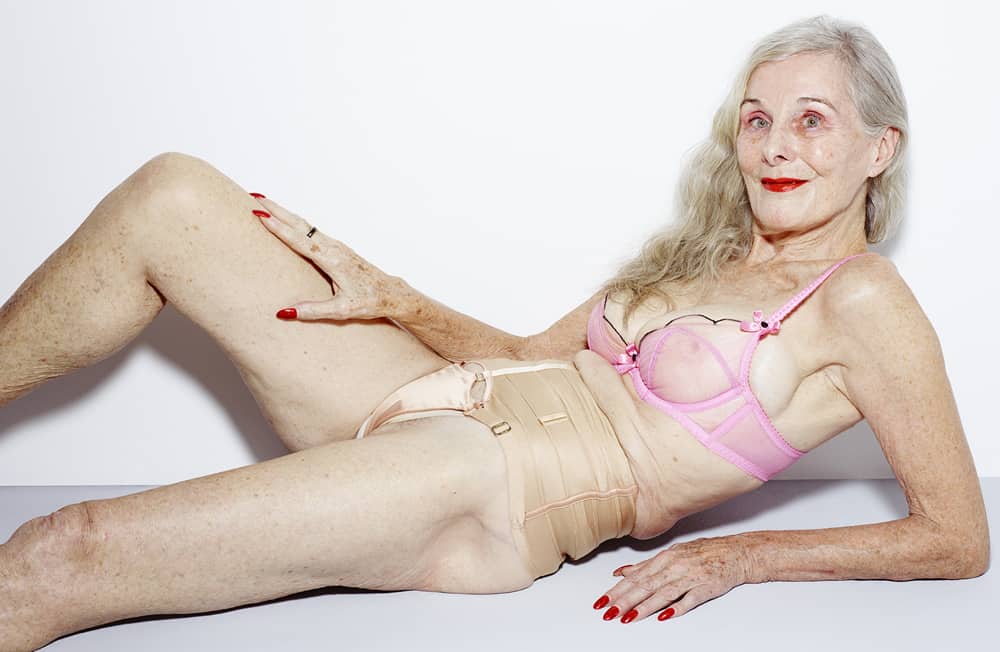
“F**k Facetune,” Impression Magazine, Issue 4, 2018 (Rankin)
Has social media and delivering social media assets for advertisers changed your job a lot?
There’s two things that have happened. You have the whole host of what they describe as influencers for a while now creating much cheaper content and with very good coverage and hit rates. Brands are attracted to that because it’s cheap and effective. Like anything where you’re not an expert in it, and you don’t understand having a strategy or something, that’s very piecemeal, a very, very fast food kind of approach. I think that in the way that the organic foods and veganism, there’s been a real shift because of knowledge and power because of mobile phones and because of social media. Things that are important can change— move very swiftly across everything. I think that that will happen to influencers very soon. I think it’s pretty much had its day for brands because they don’t have a consistency to them. What’s happened is the big multinational ad agencies, corporations, because of this, because of the shift in social, have produced that kind of mediocre creativity that influencers produce for brands. It’s become the nomr and because of that they’re struggling as companies. I think that will in its turn have a domino effect and unfortunately because of this loss of creativity — and I mean real serious loss creativity and process — it means that what you’ll find is the ad agencies will start toppling. What will come of it will be these new hybrids which is effectively what we’ve created, which is production and creativity and social. Basically all of your delivery, your creative delivery needs in one place. Brands will be attracted to that because it will be cost effective, it will be more honest. I think because we have an understanding of audiences (because we create editorial). The editorial organization is really good platforms like your platform like the Dazed platform, like Hypebeast, like Refinery… these platforms will start doing more creative solutions, also brands will start doing stuff in house, and that will become much more powerful.

“Obsessive Behaviour,” Dazed & Confused, Issue 25, 1996 (Rankin)
What do you think the next 30 years of your fashion photography will look like?
What I loved about social media when it first came along, and camera phones, was just democracy of photography. So many young creatives have come out of that. Especially exciting [is that they] really have used it as a way to reach an audience, and have been challenging things. Especially in things like beauty [photography]. I would love to start two new verticals. One would be a beauty vertical, one would be a hair vertical, because I think that it is such a creative time in those industries. I think that you’ve got so many kids [getting involved] at home. It really is a way of them expressing themselves and really experimenting against the homogeneity of the selfie, but using makeup, or using hair, or using fashion in a way that they’re trying to communicate through their own who they want to be seen as. I think that on the adverse if you take the flip side of this the selfie obsession, and you talk about the sense of individuality, there’s been a really massive rise in individualism and people believing in themselves and wanting to communicate ideas. That’s where it’s going to go and that’s where I’ll be going.
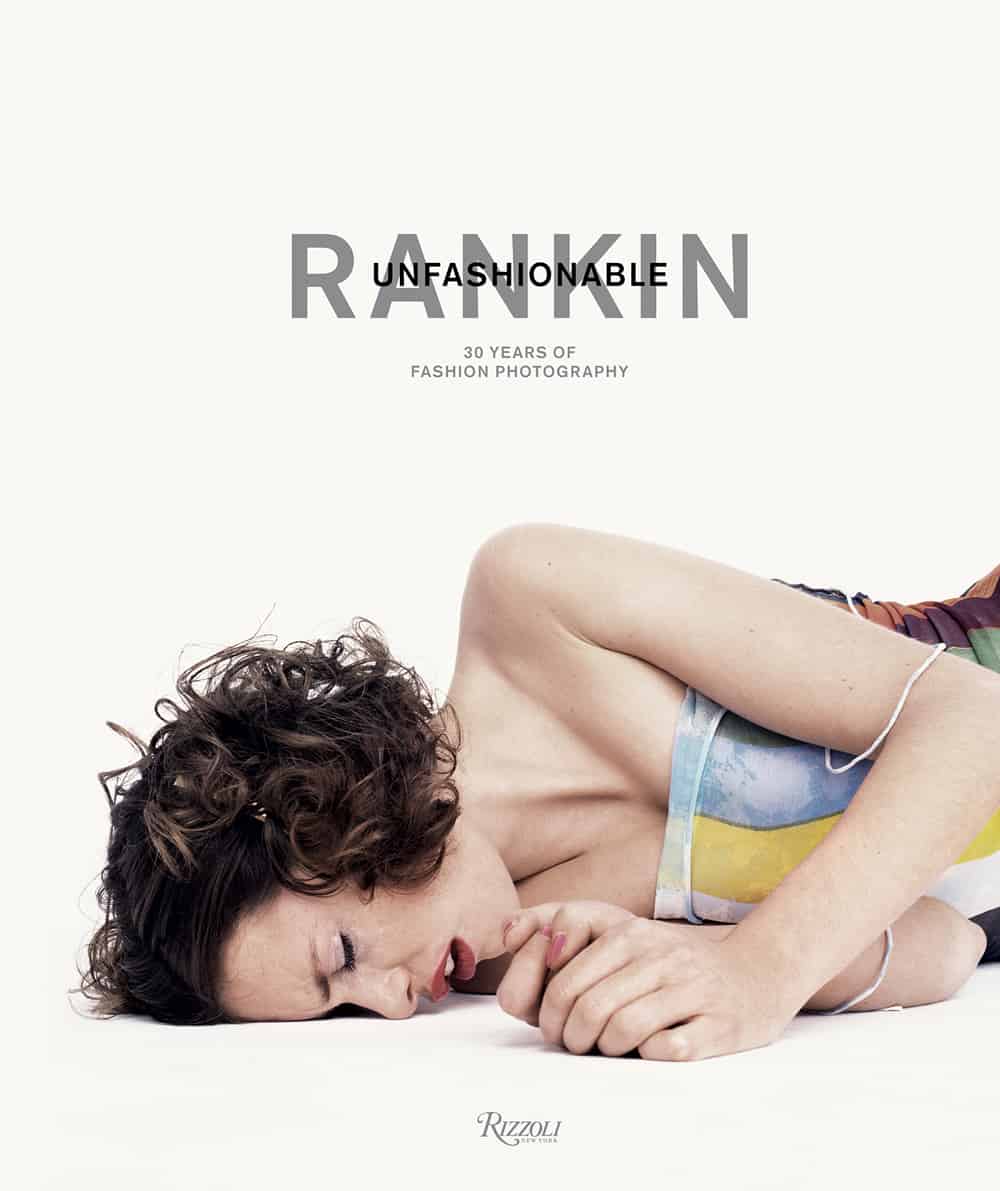
(Rizzoli)
Anything else?
I appreciate having my career and I hope no one ever takes anything I’m saying as negative about it because it’s a great business to work in and it’s got even better in the last few years. I think it’s more open and clean and I think it’s really good that it’s a different time and we should embrace it, but I really appreciate all the people that have collaborated with me over the years because I’ve had such a blast in so many shoots. I look back at it and it feels like my diary. My personal biography and I love it.
Rankin: Unfashionable: 30 Years of Fashion Photography is available for pre-order now.
Subscribe to our newsletter and follow us on Facebook and Instagram to stay up to date on all the latest fashion news and juicy industry gossip.

